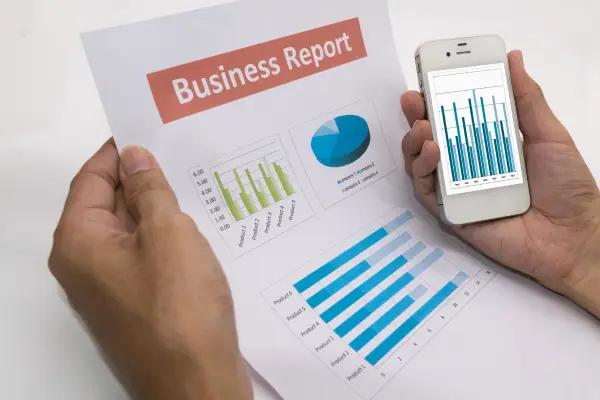Social media is full of hashtags – whoops, sorry – I mean #hashtags. But why? Well, maybe a bit of history will help us understand.
Many people think that hashtags were invented by Twitter or someone using the network about seven years ago. While that is true – the first hashtags were seen on Twitter at that time – in fact, hashtags were first used in 1990, more than a year before the first website was published by Sir Tim Berners Lee…! Hashtags were part of a “layer” of the fledgling Internet at the time called “Internet Relay Chat” (IRC) and they were used to earmark a channel of discussion. Everyone who wanted to chat about “Saturday”, for instance, would enter the IRC channel #Saturday.
Of course, the hashtag goes back further than that. The symbol has been on telephone keypads since the 1960s, following a study by Bell Labs in the USA to determine what characters people would most react to in addition to the numbers. The asterisk and the hashtag came out on top, which is why they feature on your phone keypad.
In short, hashtags are not new. We have been using them happily for almost 60 years. So you would think that we would be used to them these days. Yet, that doesn’t appear to be the case. Indeed, in a masterclass I was running this week one woman said to me, “just what is a hashtag anyway?” It was not the first time I had been asked the question in the past month, either.
So, let’s get it out of the way, now. A hashtag is a word or several words joined together that give people a way of finding something easily. That’s it. Everything that includes the hashtag – whether it is a Tweet, a post on Facebook, or something on Google+ can be located, even if you do not follow the people who sent it or have an online connection with them.
So you could, if you wanted, send out a Tweet this morning saying “I love Graham’s online business #newsletter “. That would mean that anyone who has searched for “#newsletter” would find your Tweet and therefore know about this weekly missive, even if they did not follow you or know you.
Research shows that hashtags have real value. When a social media post has a hashtag it significantly increases the chances of the item being shared. Tweets with a hashtag, for instance, are retweeted at twice the rate of Tweets without them.
However, there is a trade off between the number of hashtags and the amount of sharing. If you have one or two hashtags your post or Tweet is going to get around double the amount of additional activity compared to no hashtag being present. But if you use three or more hashtags you actually get a drop in engagement by 17% compared with an item that has no hashtags. In other words, use two hashtags and you significantly increase your engagement. But use one or three and you may as well have not bothered.
The next thing to consider is what hashtags to use. You can use any #word #as #a #hashtag. But if you use everyday words, you annoy people. You could use hashtags that are specific and relevant, such as a brand name, for instance. Or you could invent hashtags.
However, if you are going to invent hashtags you need to be careful. The supermarket Waitrose decided to invent the hashtag #WaitroseReasons and then asked customers to Tweet the reasons they shopped there. Sounds like a nice idea, until one person Tweeted that their #WaitroseReason was as they “detest being surrounded by poor people”. Another said, “I shop at Waitrose because darling, Harrods is just too much of a trek mid-week.”
In other words, think carefully as to what you do, because your hashtag can be hijacked. Also, think about what your hashtag says. When Baroness Thatcher died, there was a hashtag #NowThatcher’sDead which was misread by many people as #NowThatCher’sDead which prompted the pop artiste to point out she was very much alive. The luxury and personalised pen store, Pen Island, could also have come a cropper with #PenIsland which is easily mistaken as #PenisLand. Whoops…!
Using popular hashtags is a relatively safe bet, assuming you are not adding hashtags for the sake of it. For instance, the furniture store Habitat thought it was a great idea to Tweet “#iPhone, our totally desirable spring collection now has 20% off”. The company even used the name of the Iranian president during that country’s elections as a hashtag as a means of inviting people to apply for a £1,000 store card. Just because millions of people are using a hashtag doesn’t mean you have to use the same one..!
What you can do is go to Hashtagify.me and type in a word. It will then show you associated hashtag words and how closely linked they are to the word you are considering. For instance, type in the word “newsletter” and you will discover that the closest associated hashtag you could use is “#freemarketing”. That would mean you could use #newsletter and #freemarketing as the two hashtags giving you wider reach for people searching on associated terms, at the same time as increasing sharing with the two hashtags effect. You could also use GetHashtags.com to find a ranking of hashtags to help you choose the right ones for your content.
Hashtags have also moved beyond social media. You can find a wide range of content by searching for hashtags on Google. Currently, the most popular hashtag search, though, is #LoveIsland. The second most popular hashtag search on Google currently is #irma – clearly for everyone trying to find out information about the latest hurricane. If you are a Love Island fan (you are, right?) then Google collects all the hashtagged material from across a host of networks together in one place for you. Similarly, if you were in Florida and wanted the latest on Hurricane Irma, a hashtag search would get you a wide range of material to choose from. Hashtags, therefore, have a real value for people.
What this means for your business is that if you are not using hashtags you are missing out. They help you gain a higher profile in social media and on search engines. Without hashtags you have lower visibility and less reach for your material.
The trick is to use them appropriately, wisely and carefully. Or should I have said #appopriately, #wisely and #carefully? Oh no, that would have been one too many.


